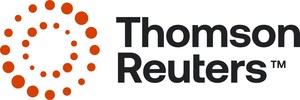Thomson Reuters Marks 50 Years of Scientific Citation Indexing in Web of Science
Web of Science, trusted by nearly 7,000 institutions, is the perpetual standard of scholarly research valuation and measurement
PHILADELPHIA, May 13, 2014 /PRNewswire/ -- The Intellectual Property and Science business of Thomson Reuters, the world's leading source of intelligent information for businesses and professionals, today announced the 50th anniversary of the Science Citation Index (SCI), an antecedent to the Web of Science™, the premier scientific search and discovery platform and industry authority in science, social science, and arts and humanities citation indexes.
The Science Citation Index, introduced in 1964, revolutionized the discovery process for researchers and, eventually, for modern Internet users. Today, Web of Science provides a vast network of people, organizations, documents, topics and countries that provide billions of connections documenting the evolution of science over the past century. Trusted by more than 6,900 of the world's leading research institutions and hundreds of governments, it is the primary resource through which scientific literature is captured for scholarly record.
This year, Thomson Reuters acknowledges the 50th anniversary of SCI by elevating the Web of Science as its innovative research discovery platform, with a new and intuitive user interface, expanded content and open-web access to subscribers. Web of Science and InCites, the company's next generation benchmarking and evaluation platform, are the standards of excellence and impact for the producers, consumers and evaluators of scientific literature.
"Thomson Reuters citation indexing has been fueling the engine of scientific discovery for 50 years," said James C. Smith, chief executive officer, Thomson Reuters. "Connecting professional communities with trusted, contextualized information is at the heart of our business, and I look forward to the innovation fostered by future generations of Web of Science users."
Today's legacy began in the 1950s when searching scholarly literature was a challenging process. Eugene Garfield, Ph.D., changed this through his concept of "citation indexing," or harnessing the cited references in scholarly publications. Garfield's innovation in recording and tracking these citations, each one a direct reflection of previous work that an author deemed of significance and useful, created a way for scientists and scholars to make intellectual connections and identify work related to their own. Garfield realized quantitative analysis of citations could illuminate areas of concentration and influence, providing an objective data point for assessing the impact of journals, individuals, institutions and nations.
"I had always visualized a time when scholars would become citation conscious and to a large extent they have, for information retrieval, evaluation and measuring impact," said Dr. Garfield, founder of the Science Citation Index. "I did not imagine that the worldwide scholarly enterprise would grow to its present size or that bibliometrics would become so widespread."
The first SCI was a five-volume print edition indexing 613 journals and 1.4 million citations. The data were later issued on magnetic tape, made available via online vendors, and distributed on compact discs (CD-ROMs). Coverage was expanded to the social sciences in 1973 with the creation of the Social Sciences Citation Index (SSCI) and to the arts and humanities in 1978 with the introduction of the Arts & Humanities Citation Index (A&HCI). These were later combined with the SCIE, a more expanded version of the SCI, in a Web environment in 1997, and the Web of Science was born.
"Web of Science has never stopped evolving, and has continually grown as truly the world's most authoritative source of scholarly citations and research connections," said Gordon Macomber, general manager, Thomson Reuters Scientific and Scholarly Research. "We aim to advance Dr. Garfield's early thinking and conceptualization of the Web of Science and honor his innovation by meeting the many needs of the modern researcher."
Web of Science advancements include expanded global coverage through the additions of the SciELO Citation Index, covering Latin America, South Africa, Spain, Portugal and the Caribbean; the Chinese Science Citation Database and the KCI Korean Journal Database; and access to content via links from open-web platforms such as Google Scholar.
Learn more about the Web of Science and this milestone celebration.
Thomson Reuters
Thomson Reuters is the world's leading source of intelligent information for businesses and professionals. We combine industry expertise with innovative technology to deliver critical information to leading decision makers in the financial and risk, legal, tax and accounting, intellectual property and science and media markets, powered by the world's most trusted news organization. For more information, go to www.thomsonreuters.com.
SOURCE Thomson Reuters
WANT YOUR COMPANY'S NEWS FEATURED ON PRNEWSWIRE.COM?
Newsrooms &
Influencers
Digital Media
Outlets
Journalists
Opted In




Share this article